St John's Wood Park 1939 - 1960
the destruction of a Victorian street
Because of the proximity to the barracks government advice recommended leaving the nieghbourhood as the chances of being bombed were high and some of the residents of St John’s Wood Park followed this advice, and the road gradually emptied. The Wheatleys watched the lurid glare in the sky over the docks as they were bombed, but when the bombing became more general, retired to the basement. Life in general became harder, the gas pressure had become so low that it took hours to cook a hot meal, our telephone had been put out of action for three weeks, we had no water so had, every few days, to visit friends in order to have a bath, and nearly every night we lay awake listening to the drone of enemy aircraft overhead.
Nina Heaton Harris
was nine years old when the first wave of bombing hit the street . I lived in St John’s Wood Park from 1940 until the bombing that more or less obliterated it on the 19th December 1940; it was a sneak raider, and aerial torpedos and molotov cocktails were dropped. We were living in the house of Sir Russell Brain (later Lord Brain and President of the Royal College of Physicians), my father had been his Chauffeur until war broke out, and after the war remained with him until both retired.
I remember the night so well. We were in the big kitchen, on the kitchen range Christmas Puddings were simmering away and on the sideboard, in front of the windows, was a big Christmas Cake iced with eskimos and a little mirror for the iced pond. My mother, father, cousin (in the ATS), myself and my baby brother, just about 2 years old, were sitting at the kitchen table and were just going to have boiled eggs. I hit my egg with a spoon and, at that moment, the whole world exploded. You couldn’t see a thing, glass was flyingabout (although we had the usual brown paper tape on the windows) there was screaming and chaos. My father got us all out into the shelter just opposite.
The house next to us belonged to the Earl of Ossory, an Irishman, and his house was used to house Refugees from France; I had a friend about my age her name was Henrietta Richardson. She had left from St Malo, I think, on one of the last boats and her father was in the Navy. The refugees had only arrived a day or so before and were in a terrible state of shock. One little boy was running around in the shelter just talking and talking, and my teeth would not stop chattering. My mother was pregnant, awaiting a baby in February. My father who, at that time, was a London Ambulance driver, had not yet left for duty in St Marylebone. Sir Bernard Spilsbury, the pathologist, whose daughter was Mrs Ward, the model, was on the same Ambulance team as my father. There was water, dirt and chaos everywhere, and my father went with other men to help rescue people in the Park. I seem to remember at the end of the Park a family had come home for Christmas to have their baby christened, and it was dead in its cot. My brother was lucky. As he was crying, he had been put in his cot in the garden room, at the back [of the house], where it had big wooden shutters on the French windows held in place by a metal bar. The bar had crashed into the cot or he would have been killed. The next morning my father got hold of a car, collected all the food from the house, the puddings still on the hob, but no cake. We drove to my grandmother in Camden Town for a night, and then later we went back to collect more things. I was told to ask a friend living at the top of Ordnance Hill if she would like my toys. All I kept was a wonderful book called Vermillion, by Norah Shaw, which I still have, All of my mother’s jewellery had been stolen. We then went to Kilburn for a week or so but the bombing was bad there, so my mother and father went into separate Hostels, and I went to Wales to stay with the mother of Russell Brain’s parlourmaid.
Edmund Haynes
was sitting at No 38 reading and the telephone rang. He took the phone call as an intrusion on his privacy, went to answer, gave the person calling hell for interrupting his reading time, and then a bomb fell close by, the ceiling fell down, and if he had still been in his armchair he would have been killed by falling masonry. Across the road at no 8, all the windows were shattered and doors blown in by blast so the Wheatleys had to move out. At no 43 the Civil Defence incident report at Westminster Archives (CDU/2/447) shows that an ambulance was called for a lady suffering severe shock and a stroke following a bomb falling, but this was later cancelled because the patient had died. There were a number of fires, but they were soon extinguished.
Verily Anderson
was offered a pleasant family house with a good garden a couple of years later, when only one other house in the road was inhabited, by an Admiral and his wife. Barrage balloons floated 100 foot above the garden. Behind us, a long crescent of over a hundred huge empty villas was slowly disintegrating, with the aid of the weather and former bombing. It was an eerie street to go along, with some of its ornate houses lying flat in their own gardens. Rotting laths and powdered plaster mingled with the mud along the untended roadway.The furniture we took out of store was enough only for a small flat and now we had a four-storied ten-roomed house to fill. But in the deserted gardens of the crescent I had seen broken chairs and tables and bedsteads. If the shops were empty, I knew where to get what we needed. Into our garden had been blown a broken lawn-sprinkler, which we converted into a standard lamp for our drawing room. Beside it lay a linen-basket which we bent back into shape and painted a nice shade of crimson and cream. From other gardens, sometimes digging a little to unearth them, I collected curtain rods and rings and coat hooks and other things needed, but impossible to buy then, for moving into a new house.
The house had been damaged in the previous raids, but had been repaired and the owner did not want it requisitioned, so only wanted a low rent. The basement kitchen was large and it was twenty paces from the gas cooker to the sink in the scullery. There had previously been four maids to go up the steep and winding kitchen stairs, but there was an unwieldy service lift to the dining room and the family often sat in the lift shaft during raids.
It felt safe enough, with no windows and two walls between us and any exploding bombs. And then, one night the little grocer’s shop where we bought our rations had a direct hit. The father, mother and little girl always sheltered in a cupboard under the stairs. They were buried. All my theories changed. One must be able to get out. I moved our camp out of the lift shaft and into a small basement room with a window, against which I loosely piled furniture .
Mr Brown, the grocer involved
wrote about that air raid:
In 1943, the little German Corporal changed the whole course of my life by having the audacity to completely demolish the old shop in Ordnance Hill. This was in the early hours of the 18th January but, as my dear wife, mother and our three week old daughter, Susan, were rescued with only minor injuries, all is forgiven but, let me be very clear, never forgotten.
John Disson
who was a wartime baby, writes during the war as part of the ‘Dig for Victory’ project my Dad was allowed to have an allotment in one of the gardens. Summertime was best of all when the trees in the gardens were laden with fruit, so scrumping was always on the agenda with apple and pear trees in many gardens, but most memorable was a beautiful mulberry tree across the road on the corner of Marlborough Place and Finchley Road, after an hour spent in the tree you finished up covered in juice and stained all over red, ‘just wait till you get home’.
After the war – playground for children among the ruins
After the War, when the leases on the houses had run out, no permanent residents returned so the houses reverted to the Eyre estate. The novelist, Elizabeth Bowen, wrote of the romantic privacy of St John’s Wood and how Ominously, lines of bomb damaged villas area being left to rot, trees of their gardens growing in at their windows, someone is waiting, greedy for their ideal sites. Over these little cadavers it is impossible not to shed a tear they were so smiling, gay, neat, compact, warm. (Flower of Cities, a book of London 1949)
For John Disson it was a wonderful playground: there remained St John’s Wood Park, the entire area having what appeared to be abandoned houses all vacated during before the war, magnificent properties with some having cobbled stable yards, imagine this in the centre of London. Many of the houses were in first class order showing no sign of damage, just neglect, why were they ever vacated, was it just because of the fear of being bombed and an opportunity to escape to the country?
One beautifully large house set within the triangle that is now Queensmead was particularly impressive, as you entered the entrance hall you were presented with a wide marble staircase that wound off to left and right, Manderley right here in the Wood, was Mrs Danvers anywhere to be found? This was just one example of many of the properties to be found there. In each house ghosts of the past were ever present, in the basements where you saw the servants calling panels you almost expected the bell to ring and the room indicator to move just as if there was someone there, waiting patiently but never to be attended to, very scary!
Illustrated magazine described the Park in November 1950: there was only a small block of flats at the top, and a nursing home, nursery school and an estate office at the bottom, the rest was forty three huge, empty houses. The pavements were thick with weeds, the road driven over by learner drivers who went there because there was no traffic. There were crumbling stone walls, silent houses and overgrown gardens and crooks use it as a hideout when they are on the run. Windows had no glass, there were holes in the roofs and crumbling stucco.
In the 1945 Westminster electoral register Nos 17 & 18 had been turned into a hostel which, by 1948, had 65 people in it. The houses continued as a hostel but numbers of registered voters declined to 12 in 1956 and 8 in 1960. Nos 20 – 26 had one or two voters registered for each house. Will Andrews, Mr Partridge’s groom, now in his 70’s, was still to be found drinking in the Prince of Wales public house.
Humphrey Searle
the composer, lived in the Park for a while and his experience is perhaps a good example of the housing problems of the time. The BBC would not pay for a hotel room when programmes overran and, as he was also having an affair with a musician, he wanted a hideaway in London; a pianist friend found a room for him in the basement of a house [later demolished] in St John’s Wood Park, in 1948. It was spacious and had a view of a garden but was on the damp side. In his memoirs Quadrille with a Raven he wrote that the affair did not last. When he suggested marriage and found a house to buy in St John’s Wood which was empty, apart from a family occupying one floor, my friend flatly refused to move in as there was no Ascot geyser. So we parted.
Post War rebuilding
Gradually the Eyre estate sold off portions of the land – Boydell Court at the top of St John’s Wood Park was built in the mid-1950s as council flats but proved too expensive and was sold to private buyers. The triangle of houses was destroyed. Middle Field was built in the gardens of Park houses and detached houses appeared down the side of the Park, but as John Disson says: It was surely a crime of Philistine proportions to allow these properties to rot and then pulled down, today it would never be allowed to happen for without question these houses would be worthy of being listed, even a conservation zone could have been established to protect it all.
In the early 1960s, the land round the triangle of the Park was sold to Norwich Union, and Sheringham, Walsingham and Mancroft Courts were built. Life came back to St John’s Wood Park, but it had lost that special atmosphere.
With thanks to Nina Heaton Harris for her reminiscences, Charles Beck of the Dennis Wheatley website for informing us about the memoirs entitled ‘Drink and Ink’ which contain references to St John’s Wood Park, Mr Brown’s family for his memories, John Disson for his recollections, Oriana Tickell de Castello for family stories and Verily Anderson’s book ‘Spam Tomorrow’.




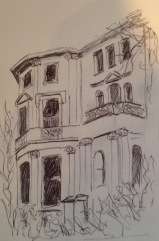








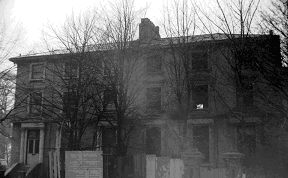
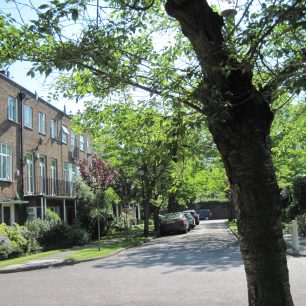
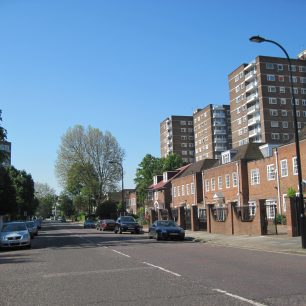




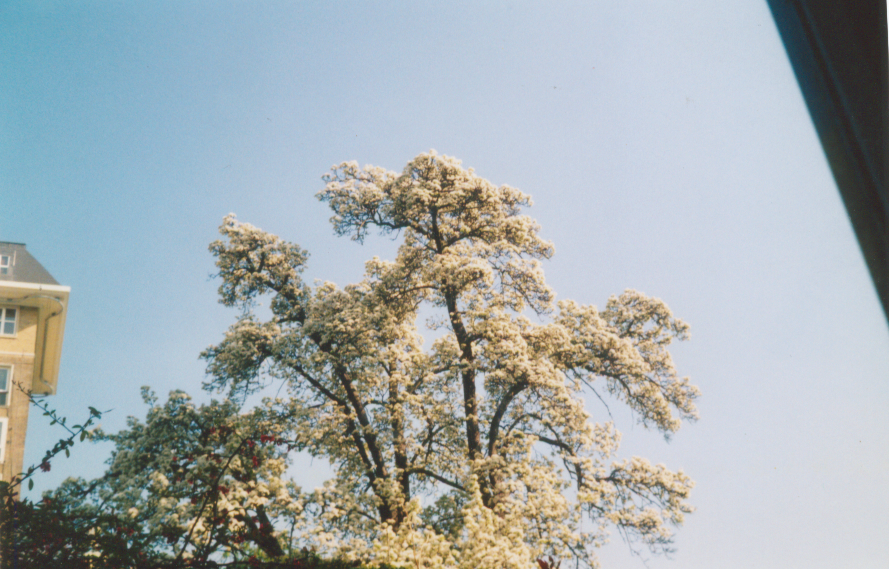



Comments about this page
I believe my mother’s mother was killed in the December bombing in St. John’s Wood. Her name was Mina Lambert and she lived on Circus Road. My mother, Marian, described being with her in her townhouse, sharing a drink, when a bomb hit the house and brought a heavy beam down and killed her mother. I have been searching for exact data for many years and finally have come close with this website. Will subscribe to the British Phone Directory data and see if I can find the exact location.
I believe my Great-Grandfather and his family were among the French refugees housed in the area. My Nan explained to me today that he (Great-Grandfather) had escaped Spain under the reign of Franco and worked in France where the Red Cross found him. His name was Pere Mitja and had two daughters at the time if anybody knows anything. I can’t find a thing.
Loved the recollections of St Johns Wood Park. Am looking for pictures of North Bridge House School in the 1940’s /50’s and I am trying the school but if anyone knows of any other sites I would be grateful
Has anyone a picture of the house named Blakeney, next to the Earl of Osserys house, an Irish Earl who had refugees housed there, one of them was Henrietta Richardson, father in the Navy and I was told on one of the last boats to leave St Malo; does anyone know of her ?
Add a comment about this page